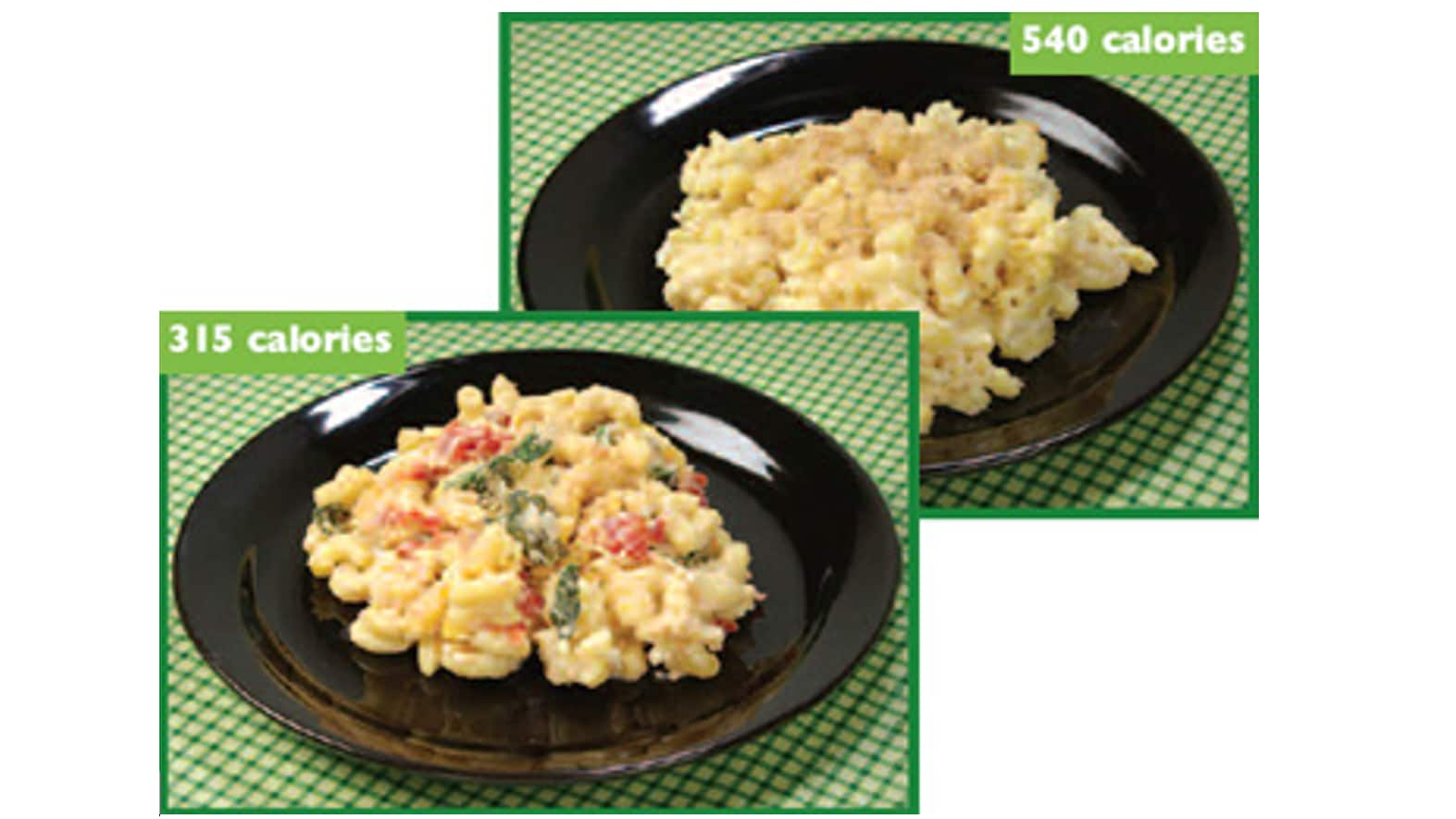Key points
- An eating plan that helps promote health and manage weight includes a variety of healthy foods.
- Comfort foods, in limited amounts, can be part of healthy eating patterns.

Why it's important
People with healthy eating patterns live longer and are at lower risk for serious health problems such as heart disease, type 2 diabetes, and obesity. For people with chronic diseases, healthy eating can help manage these conditions and prevent complications.
According to the Dietary Guidelines for Americans 2020–2025, a healthy eating plan:
- Emphasizes fruits, vegetables, whole grains, and fat-free or low-fat milk and milk products.
- Includes a variety of protein foods. Healthful options include seafood, lean meats and poultry, eggs, legumes (beans and peas), soy products, nuts, and seeds.
- Is low in added sugars, sodium (salt), saturated fats, trans fats, and cholesterol.
- Stays within your daily calorie needs.
USDA's MyPlate Plan can identify what to eat, how much to eat from the different food groups, and how to stay within your recommended calorie allowance. My Food Diary can help you track meals and snacks.
Keep reading for specific tips for fruit, vegetables, calcium-rich foods, meat, and comfort food.
Fruit
Fresh, frozen, or canned fruits are great choices. Try fruits beyond apples and bananas, such as mangos, pineapples, or kiwis. When fresh fruit is not in season, try a frozen, canned, or dried variety. Be aware that dried and canned fruit may contain added sugars or syrups. Choose canned varieties of fruit packed in water or in its own juice.
Vegetables
Add variety to grilled or steamed vegetables with an herb such as rosemary. You can also sauté (pan-fry) vegetables in a non-stick pan with a small amount of cooking spray. Or try frozen or canned vegetables for a quick side dish—just microwave and serve. Frozen peppers, broccoli, or onions can give stews and omelets a quick and convenient boost of color and nutrients.
Look for frozen and canned vegetables without added salt, butter, or cream sauces.

Calcium-rich foods
In addition to fat-free and low-fat milk, consider low-fat and fat-free yogurts without added sugars. These come in a variety of flavors and can be a great dessert substitute.
Fortified soy alternatives and canned sardines and salmon are also good sources of calcium. Vitamin D aids in calcium absorption. Sources of vitamin D can include:
- Fortified drinks such as milk and fortified soy beverages.
- Fortified foods such as yogurt or some cereals.
- Some seafoods.
Meats
If your favorite recipe calls for frying fish or breading chicken, try healthier variations by baking or grilling. Maybe even try dry beans in place of meats. Ask friends or search the internet and magazines for recipes with fewer calories. You might be surprised to find you have a new favorite dish!
Comfort foods
You can still enjoy your favorite foods, even if they are high in calories, fat, or added sugars. The key is eating them only once in a while.
Some general tips for comfort foods:
Eat them less often. If you normally eat these foods every day, cut back to once a week or once a month.
Eat smaller amounts. If your favorite higher-calorie food is a chocolate bar, have a smaller size or only half a bar.
Try a lower-calorie version. Use lower-calorie ingredients or prepare food differently.
For example, a macaroni and cheese recipe might include whole milk, butter, and full-fat cheese. You can try remaking it with non-fat milk, less butter, low-fat cheese, fresh spinach, and tomatoes. Remember to not increase your portion size.

